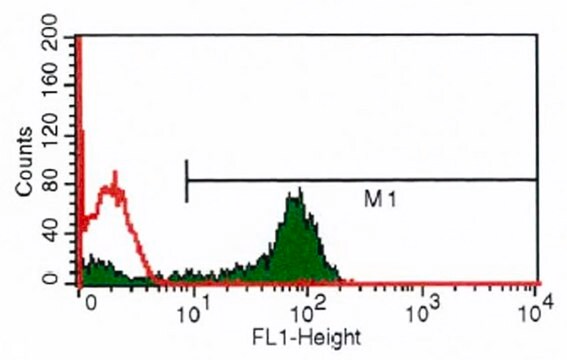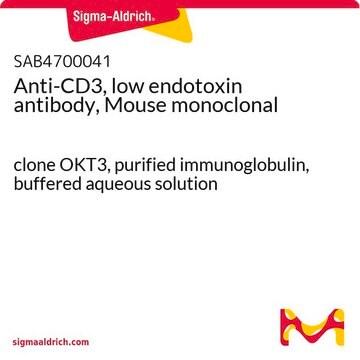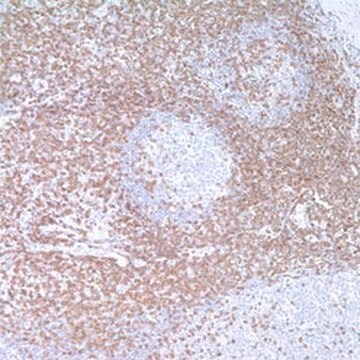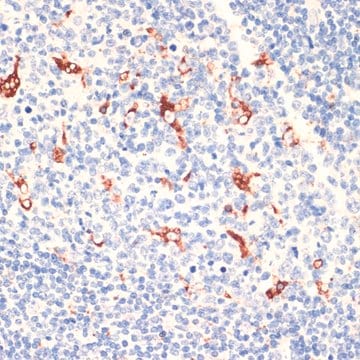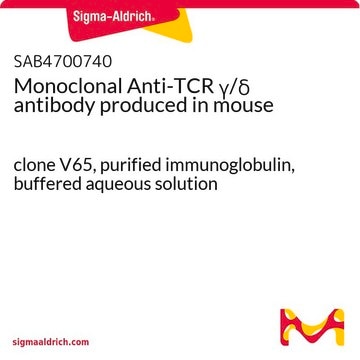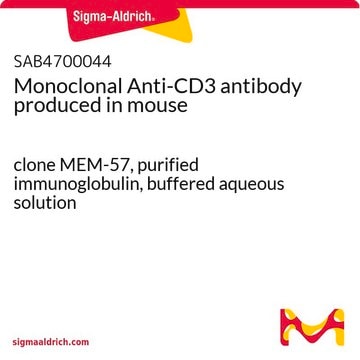Wichtige Dokumente
C7930
Anti-CD3, T Cell antibody produced in rabbit
whole antiserum
Synonym(e):
Anti-CD3epsilon, Anti-IMD18, Anti-T3E, Anti-TCRE
Größe auswählen
About This Item
Empfohlene Produkte
Biologische Quelle
rabbit
Konjugat
unconjugated
Antikörperform
whole antiserum
Antikörper-Produkttyp
primary antibodies
Klon
polyclonal
Mol-Gew.
antigen 20 kDa (bovine and swine)
Enthält
15 mM sodium azide
Speziesreaktivität
rat, canine, mouse, human, Psammomys (sand rat), sheep, feline, pig, chicken, bovine
Methode(n)
immunohistochemistry (formalin-fixed, paraffin-embedded sections): 1:200 using enzyme pre-digested, formalin-fixed, paraffin-embedded human tonsil sections
western blot: 1:200 using mouse thymus extract
UniProt-Hinterlegungsnummer
Versandbedingung
dry ice
Lagertemp.
−20°C
Posttranslationale Modifikation Target
unmodified
Angaben zum Gen
human ... CD3E(916)
mouse ... Cd3e(12501)
rat ... Cd3e(315609)
Allgemeine Beschreibung
Spezifität
Immunogen
Anwendung
- immunoblotting
- immunofluorescence staining
- immunohistochemistry
- immunohistochemical analysis
Biochem./physiol. Wirkung
Haftungsausschluss
Sie haben nicht das passende Produkt gefunden?
Probieren Sie unser Produkt-Auswahlhilfe. aus.
Lagerklassenschlüssel
12 - Non Combustible Liquids
WGK
nwg
Flammpunkt (°F)
Not applicable
Flammpunkt (°C)
Not applicable
Hier finden Sie alle aktuellen Versionen:
Analysenzertifikate (COA)
Die passende Version wird nicht angezeigt?
Wenn Sie eine bestimmte Version benötigen, können Sie anhand der Lot- oder Chargennummer nach einem spezifischen Zertifikat suchen.
Besitzen Sie dieses Produkt bereits?
In der Dokumentenbibliothek finden Sie die Dokumentation zu den Produkten, die Sie kürzlich erworben haben.
Kunden haben sich ebenfalls angesehen
Active Filters
Unser Team von Wissenschaftlern verfügt über Erfahrung in allen Forschungsbereichen einschließlich Life Science, Materialwissenschaften, chemischer Synthese, Chromatographie, Analytik und vielen mehr..
Setzen Sie sich mit dem technischen Dienst in Verbindung.


